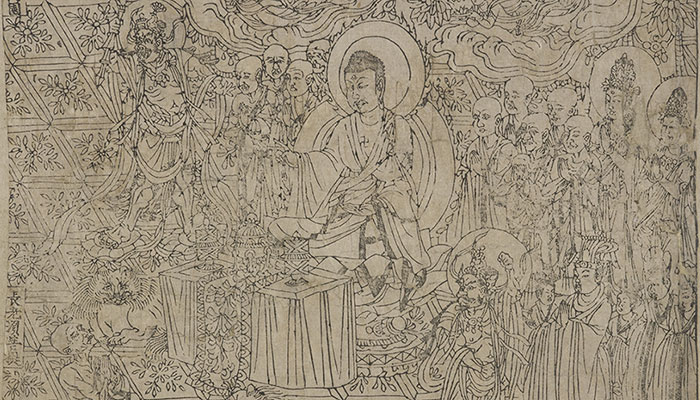Sutras are the songs and poems and written words that draw together the collective wisdom of Mahayana Buddhism in which the Zen tradition sits. The Mahayana, known as the second turning of the dharma wheel, was that moment in the 1st century CE when the Bodhisattva path emerged among Buddhist communities, the idea that enlightenment, the life we lead, is not merely our possession, but lived out for all beings. As in this fragment from Tori Zenji’s Song of Zazen:
When I look at the real form of the universe,
all is the never-failing manifestation of the mysterious truth of Tathagata.
In any event, in any moment, and in any place,
none can be other than the marvellous revelation of its glorious light. This realisation made our founding teachers and virtuous Zen leaders extend tender care, with the heart of worshipping, to animals and birds, and indeed to all beings.
This realization teaches us that our daily food, drink, clothes, and protections of life
are the warm flesh and blood, the merciful incarnation of Buddha.
When we chant sutras together they become a physical expression that centres us in our practice. Energetic, intuitive, intellectual and emotional resonances come to life through their sounds and words and the collective wisdom that echoes back through the ages to the early beginnings of Buddhism. Many early sutras begin "Thus I have heard" anchoring them in the imagination of the lived experience of hearing those very words from the Buddha himself. Later sutras continue this tradition somewhat taking the form of words spoken by one of the ancients or of a debate between followers holding different views. Through these means the liveliness of the tradition reveals itself as it has developed, adapted and been translated across different languages and cultures over the centuries including into the language and idioms of the West: tradition and change continues.
When I look at the real form of the universe,
all is the never-failing manifestation of the mysterious truth of Tathagata.
In any event, in any moment, and in any place,
none can be other than the marvellous revelation of its glorious light. This realisation made our founding teachers and virtuous Zen leaders extend tender care, with the heart of worshipping, to animals and birds, and indeed to all beings.
This realization teaches us that our daily food, drink, clothes, and protections of life
are the warm flesh and blood, the merciful incarnation of Buddha.
When we chant sutras together they become a physical expression that centres us in our practice. Energetic, intuitive, intellectual and emotional resonances come to life through their sounds and words and the collective wisdom that echoes back through the ages to the early beginnings of Buddhism. Many early sutras begin "Thus I have heard" anchoring them in the imagination of the lived experience of hearing those very words from the Buddha himself. Later sutras continue this tradition somewhat taking the form of words spoken by one of the ancients or of a debate between followers holding different views. Through these means the liveliness of the tradition reveals itself as it has developed, adapted and been translated across different languages and cultures over the centuries including into the language and idioms of the West: tradition and change continues.

